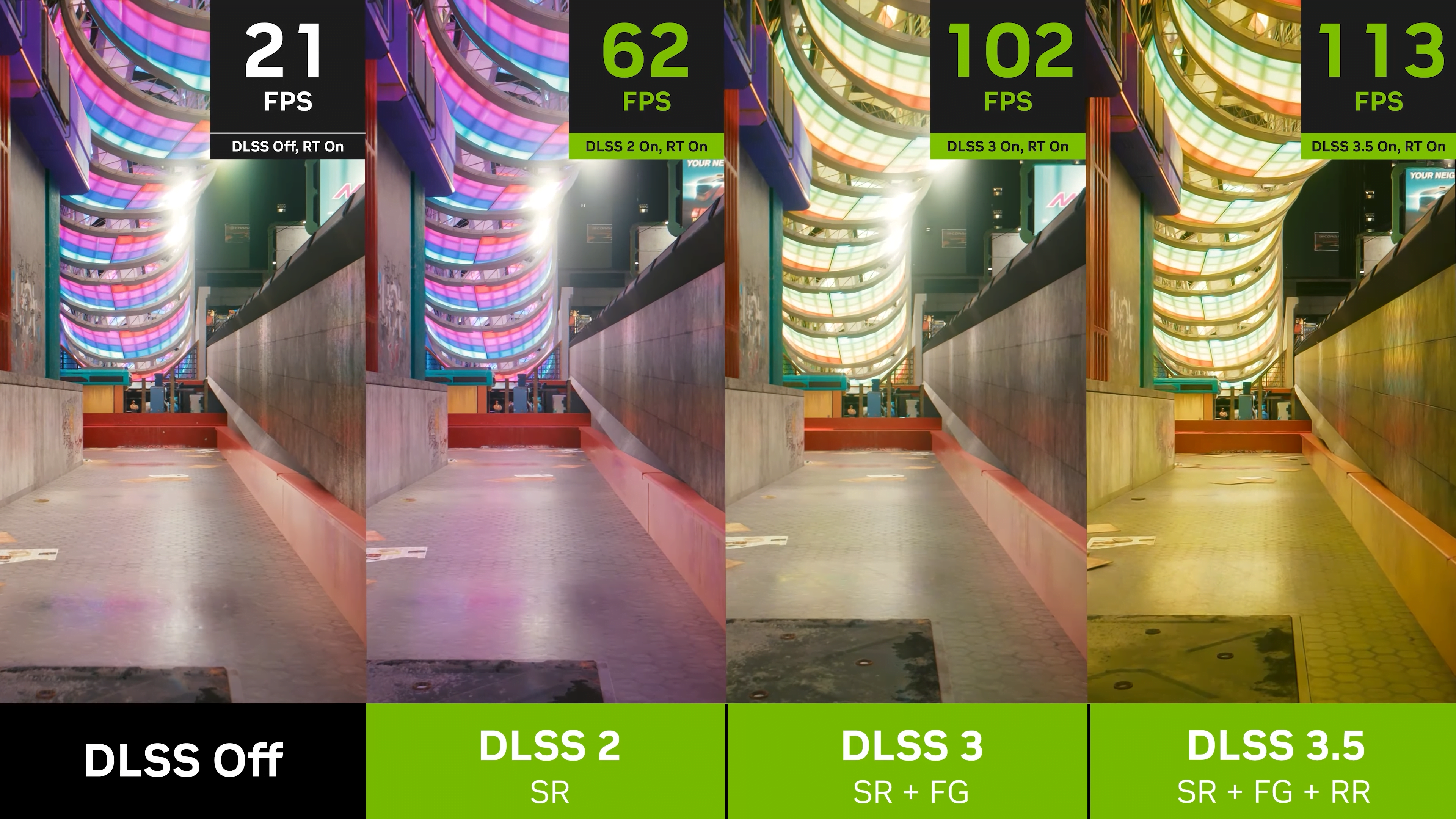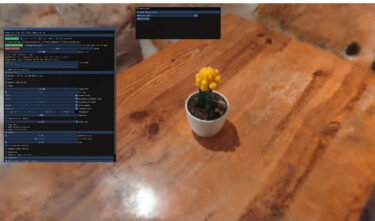Nvidia today announced DLSS 3.5, the latest version of its Deep Learning Super Sampling technology, which uses AI to improve ray tracing quality and performance in games and Nvidia Omniverse.
DLSS 3.5 focuses on improving ray tracing through a new AI model called "Ray Reconstruction", which replaces manually tuned denoisers. Ray tracing calculates how light rays interact with materials to create realistic lighting effects. But ray tracing every pixel is too demanding, so games use ray sampling, which results in noisy images. Denoisers fill in the missing data, but can introduce artifacts.
DLSS 3.5's Ray Reconstruction uses a supercomputer-trained neural network to analyze ray-tracted effects and make smarter decisions about how to use temporal and spatial data to preserve detail. It recognizes patterns from offline rendered training data to reconstruct effects such as global illumination in real-time.
This overcomes the limitations of traditional denoisers by eliminating artifacts such as inaccurate lighting and reflections that degrade image quality. DLSS 3.5 results in superior lighting, reflections, and detail compared to standard denoising, according to Nvidia. It works with DLSS Super Resolution for upscaling and DLSS Frame Generation for smoother frame rates.
For games with intensive ray tracing, DLSS 3.5 can also improve performance by replacing multiple denoisers with a single ray reconstruction model. For games with less ray tracing, it prioritizes image quality over performance.
DLSS 3.5 will be available this fall in Alan Wake 2, Cyberpunk 2077, Cyberpunk 2077: Phantom Liberty, Portal with RTX, Chaos Vantage, D5 Render, and Nvidia Omniverse. It's offered as a free upgrade for GeForce RTX GPUs to improve ray tracing in supported games.
More than 330 games already support DLSS, which continues to evolve through Nvidia's artificial intelligence research. Nvidia says that it plans to build on the progress of DLSS to further improve graphics and rendering.





